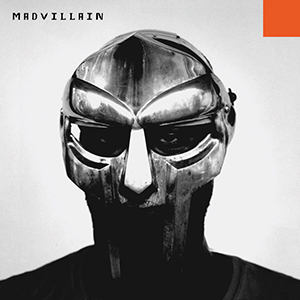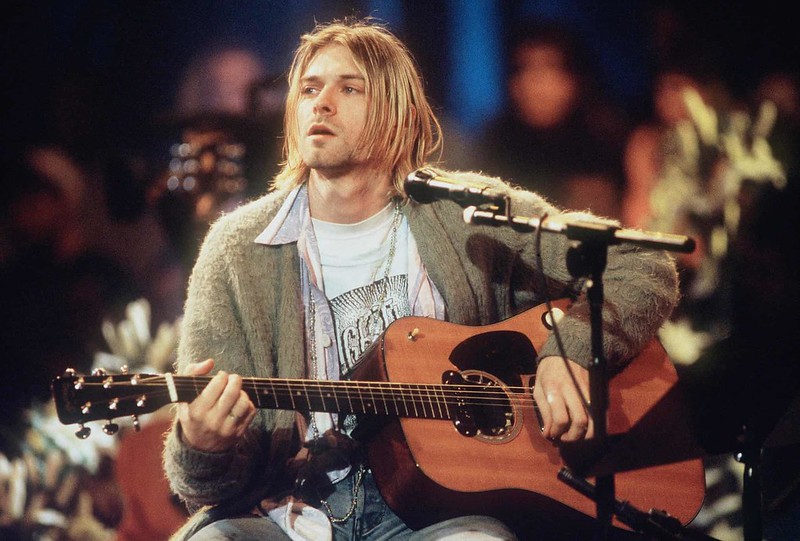
Contrary to popular belief, reality is not singular – there are always at least two realities at any given time. One is actual, factual, concrete and more importantly, demonstratively so. The other type of reality is no less real, per se, but it’s constructed, and, most disconcertingly, it’s not only weighed down by a subjective distortion of history but is typically prioritized above the former reality.
Now, in spite of that breathless and seemingly unnecessary preface, this is a music review – specifically, a review of perennial Canadian rockers Our Lady Peace’s most recent album “Curve,” which quietly dropped a week or so ago. So, “Why the sub-Metaphysics 101 philosophical rumination?” asks the voice of reason. Well, 1) the pretentiousness of people who will judge a band like OLP’s entire eight-album, two-decade career based solely on the existence of a singular (albeit subpar) mainstream rock radio single must be countered somehow; and, more importantly, 2) Our Lady Peace is a band whose current artistic existence is precariously straddled between the two previously stated kinds of realities – and thus, so is “Curve.”
See, the answer to the simple question, “Who is Our Lady Peace?” can be answered two different ways depending on which reality you’re talking about, both of which are technically true.
To most people in America (I’m in no position to opine on the current mindset of citizens of the band’s native Canada), OLP is essentially the band that wrote and recorded the 2002 hit “Somewhere Out There.” In the nicest terms possible, they’re a post-grunge-lite outfit whose resume is headed up with a power ballad that cracked the Billboard Top 100 and was almost featured in the soundtrack to the first “Spiderman” film.
But this reality, though perfectly suitable for many, is a constructed one. That one terrible song from that one terrible album (2002’s “Gravity,” which could easily be labeled the band’s “St. Anger,” mostly due to production duties by Bob Rock and its ensuing massive levels of suck) is the consensus representative for what OLP is.
Of course, this is rather disingenuous. Taking into heavy consideration that one awful song, or even that entire awful album, or even the slightly less awful but still pretty bad follow-up “Healthy In Paranoid Times” (also sadly helmed by Bob Rock) actually undercuts the legacy of a band who in many ways swam against the stream of ’90s alt-rock, while the current mostly turned to watered-down Brit-pop and powerpop.
Not many other bands were writing alternative rock albums that were influenced as much by Jack Kerouac as by Kurt Cobain, infused with accessibility and integrity – and even fewer were spawning concept albums based on futurism, AI and Ra Kurzweil novels (see OLP’s 2000 magnum opus “Spiritual Machines”). Our Lady Peace is/was an alt-rock band that didn’t make alt-rock albums, and that is arguably as transcendent as a form of pop culture gets.
Listen to songs from the album “Clumsy,” even songs that charted fairly successfully in Canada, and you will hear lead vocalist Raine Maida sing in a way that no one at the time was singing. And by no one, I don’t mean few people – I mean no living person sang like Raine Maida used to sing. In short, things potheads say about their favorite bands were actually true about Our Lady Peace in the ’90s.
But these two realities share a very jarring co-existence; going from one of the only good-to-great bands to ever be appropriately labeled as “post-grunge” to Bob Rock-assisted artistic suicide is the musical equivalent of someone with a really good driving record drunkenly overshooting their driveway and smashing their car into their neighbor’s living room. OLP have made more good albums than bad – but they still crashed their car into a house.
This brings us to “Curve,” an album that represents a conscious effort on OLP’s part to make an album just like ones they’ve already made. And this isn’t just an inferential observation – every single member of the band has gone on record in interviews saying that this album was an attempt to reanimate the processes behind their first couple albums. In fact, that’s all they’ve been saying about every album for the last decade since the hopelessly inept radio-friendliness of “Gravity.” Ditching Bob Rock was a good first step, but while 2009’s “Burn, Burn” was a step in the right direction, it was definitely a baby step.
So, is “Curve” a return to form? Well, yes and no – mostly no – but not in a bad way, though not necessarily in a great way. Reports have circulated that longtime friend of the band and “Curve” producer Jason Lader supposedly asked the band, “Why don’t you make an album that you would listen to,” the answer to that query apparently being “Arcade Fire does their best Radiohead impression.”
On the positive, the slow process of returning some level of grit to their sound from the saccharine levels of radio-friendliness of their early 2000s disappointments is finally coming to fruition, and there are some genuinely eyebrow-lifting moments (in a good way) on this album. The intro to lead single “Heavyweight” sounds more Daft Punk noir than guitar rock, and the expected sentimental ballad is pleasantly broken up by a Sabbath-esque breakdown.
Both of these examples are counterpoints to the cry many longtime OLP fan boys like to air out whenever they’re within arms reach of a YouTube comments page, namely that guitarist Steve Mazur, who had the unfortunate luck of taking over for forming member Mike Turner about 10 years ago, is apparently the root of everything bad that Our Lady Peace has ever done since he joined ship.
Mazur’s guitar lends the long-amiss punch to a lot of the tracks on “Curve,” whether it’s the sleek riffage on tracks like “Heavyweight” and “Fire In The Henhouse” or the wall-of-sound distorted lines that are more reminiscent of Electric Wizard than alt-pop. Plus, the guy’s got some vocal chops that lend to some pleasant duality in the vocals department on “Curve.” Check the high top harmonies on album opener “Allowance.”
A big plus on this album is lead vocalist Raine Maida’s incorporation of the more dynamic style he was known for in the ’90s. While it’s impressive that someone who was once known as a countertenor can now reach the low, droning baritone style he’s taken to in recent years, there’s finally some re-emergence of the nasally falsetto he perfected on albums like “Clumsy” and “Happiness Is Not A Fish That You Can Catch.” It’s nice to hear him finally balance these two styles well throughout “Curve.”
The atmosphere on this album approaches greatness at times but is also its undoing in the long run. On the one hand, the listener gets pulled into the dark reverberation of “Fire In The Henhouse,” the dissonant and fleeting beauty of “Window Seat,” the chilled modalities of “Will Someday Change” and the wonderful sparseness of closer “Mettle.” These are all singularly engrossing vibes – in fact, there’s a distinct, if distantly related, ambient post-rock feel to some of the album’s best moments, helping to evenly ground some of bigger, bombastic chorus hook moments, which helps the album retain a decent balance of immediacy and atmosphere throughout.
But the overall mood of the album seems wrought with disconnectedness; the songs approach greatness, and some even are great – “Rabbits” is probably the best song the band has written in over a decade – but “Curve” is hampered by its transitions. Tunes like “Find Our Way and “If This Is It” are spot-on “The Bends” era Radiohead tributes, numbers such as “Mettle” and “Will Someday Change” pleasurably blend post-rock and alternative, “Allowance” and “As Fast As You Can” brush up against indie-folk stylings, and one would think this would serve to display some considerable range. However, all it realistically does is shed light on the fact that Our Lady Peace wasn’t trying to make some sort of convoluted post-rock/indie-folk/alt-throwback hybridization; they were trying desperately – and by any means necessary – to finally make good on their effort to distance themselves from a mediocre mid-career stain that happened 10 years ago.
The album is good, but not good enough to make up for the disjointedness that is the result of their perpetual state of artistic panic. Rock bands who decide to steadfastly keep their white-knuckled grip on the paradigm of long-play records in a world of digital download must remember the number one thing that has made all the great records in rock history better than simply a dozen or so songs packaged together, and that is the concept of the whole being greater than the sum of its parts.
For a band like Our Lady Peace, this pressure is 10-fold, since not only do they have considerably good albums that permanently set the bar of comparison relatively high, they also have a couple stinkers that make proving they can return from one reality into another to be a long leap. “Curve” represents a band admirably making that leap, but currently lacking the focus to cross the divide between their two realities.
Dave Coffey can be reached [email protected].













Satan • Jul 9, 2015 at 2:34 am
By the way i love how you write. ☺️
Satan • Jul 9, 2015 at 2:32 am
1. Drop Mazur. 2. Bring back Mike. 3. Hire lanni. 4. Everyone gets happy.
Steven • Apr 25, 2012 at 2:56 pm
I really enjoyed this review, Dave. Thoughtful perspective. Though Curve, for me at least, represents a breath of fresh air from the last 10 years, I wonder if OLP will ever live down their time in the dark. I think this record is a pretty solid representation of the two realities you speak of, borrowing elements from both-and doing it well. However, I’d like to ask you what you believe a true return to form would be.
Instead of borrowing from the Arcade Fire & Radiohead, where should their focus be? Did they have a sound so completely ‘their,’ that you deem it a disappointment to merely put their own spin on their favorite influences?
Thanks, Dave.
Carter • Apr 25, 2012 at 1:21 pm
Kudos for a very well-written article, but I have to scratch my head at the failure to mention “Superman’s Dead,” a 1997 single that was just as – if not more – popular than “Somewhere Out There.” It was ubiquitous on rock radio that year, as was the title track from “Clumsy.”